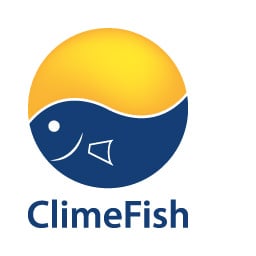Climate change and impacts on lakes and ponds
Higher inland water temperatures may reduce the abundance and distribution of wild fish stocks in lakes by reducing water quality, longer dry seasons, fish mortality, introduction of new predators and pathogens, and changes in the prey abundance for fish. However, the most significant drivers of change in inland aquaculture and fisheries will be the floods and droughts that result from increasing seasonal and annual variability in precipitation.
Climate change is already beginning to affect plants and animals that live in freshwater lakes and rivers, altering their habitat and bringing life-threatening stress and disease. Freshwater fish species adapted to cold waters are particularly vulnerable to warming as they experience unfavourably high temperatures in the southernmost reaches of their distributions. Further north, climate warming may improve growth conditions, but will also favour colonisation by warm water species that can threaten the native cold water fish populations.
Read more in the ClimeFish Virtual Fact Sheets:
The main current threats to this sector are overfishing, pollution and possibly competition from introduced species. The mean surface temperature of European lakes may range from 6°C during the winter months to 27°C during the summer months. An increase of temperature is expected to produce changes in water circulation patterns, causing an increase in nutrient concentration in the hypolimnion (the deepest layer) and a decrease of productivity in the upper layer. These patterns could impact many species of freshwater fish, and the interactions between them, pushing the whole ecosystem into imbalance.
Warm-water predatory fish species such as European wels catfish (Silurus glanis) and pikeperch (Sander lucioperca) are highly valued in freshwater fishery in Central Europe. Especially in recreational fisheries, they represent valuable game species and changes in their catches are much debated among anglers. One would expect that with increasing temperatures due to climate change, the future of Lipno pikeperch fishery is rosy. This is however in contrast with recent trends where pikeperch catches in Lake Lipno collapsed in early 2000s after more than two decades of stable or increasing catches, and local angling authorities were forced to employ protective measures to lower the fishing pressure.
Analysis of long-term data for several lakes across Europe, spanning the climatic range from Northern Norway to Italy, will allow ClimeFish to address the impact of fishery and management decisions on stock and ecosystem health and resilience throughout Europe. This will help decision-making for both management and climate adaptation plans to prevent declines in the yields of European freshwater fisheries.
You can read more about the specific cases included by ClimeFish in the Lake and pond sector here:
C7F – North Norwegian Lakes, including species like Brown Trout, Arctic charr
8F – Italian Lake Garda, including species like whitefish, Arctic charr
C9F – Czech Republic Lakes, includes species like catfish, pike-perch, carp
C10A – Hungary, includes Fish like carp and catfish

